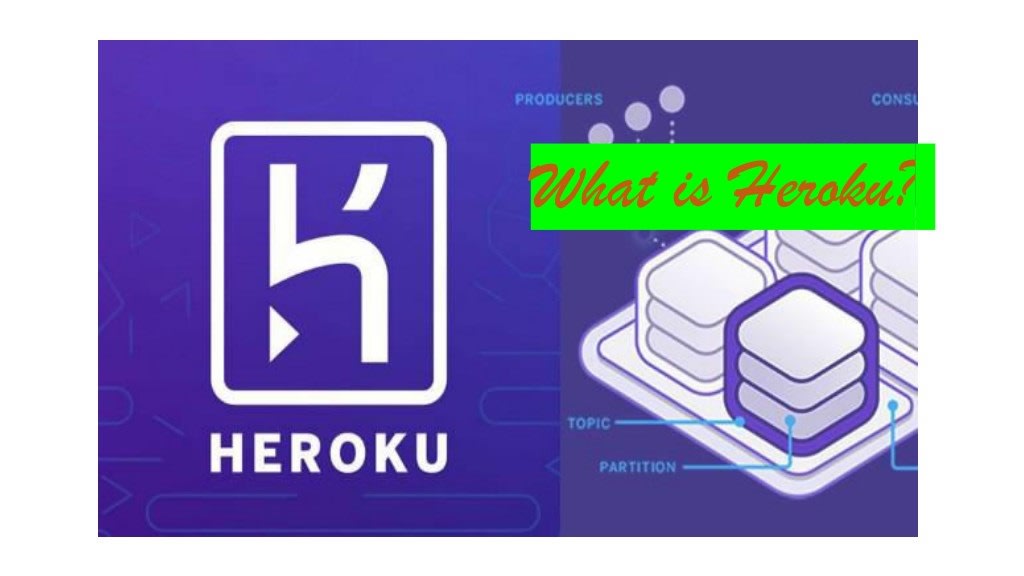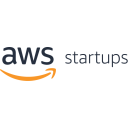Vercel vs Heroku: Choosing the right deployment platform
- 01Vercel vs Heroku: overview
- 02What's the difference between Vercel and Heroku?
- 03Vercel pros and cons
- 04Heroku pros and cons
- 05Vercel compared to Heroku
- 06Heroku compared to Vercel
- 07Features comparison
- 08Vercel vs Heroku: Which is the best for your business?
- 09Promotions on Web Development software
- 10Alternatives to Vercel & Heroku
When launching or managing a web application, selecting the appropriate hosting and deployment platform is essential for its success. In the modern development landscape, Vercel and Heroku emerge as two prominent contenders, each offering unique strengths tailored to different types of projects.
In this comparison, we delve into the platforms' core features, pros and cons, and key differences to assist you in determining the best fit for your web application. Whether you prioritize ease of deployment, scalability, support for modern development frameworks, or a robust ecosystem of add-ons, understanding what Vercel and Heroku offer will guide you in making an informed decision for your project's needs.
Vercel vs Heroku: overview
In the world of web hosting and deployment solutions, Vercel and Heroku emerge as top contenders, each offering unique features and advantages tailored to distinct user requirements.
Vercel stands out for its specialization in frontend development and Jamstack architecture. Geared towards developers working with modern frameworks like Next.js and React, Vercel provides a seamless platform for deploying web applications with minimal configuration. On the other hand, Heroku offers a versatile platform capable of accommodating a wide range of applications and development environments. Supporting multiple programming languages and frameworks, including Node.js, Ruby on Rails, Python, and more, Heroku provides flexibility and adaptability for diverse project requirements.
In this comparison of Vercel vs. Heroku, we delve into the core features, strengths, and weaknesses of each platform to assist you in selecting the optimal solution for your web hosting and deployment needs. Whether you prioritize simplicity, flexibility, or scalability, understanding the nuances between these platforms is essential for making an informed decision and maximizing the success of your projects.
What's the difference between Vercel and Heroku?


When comparing Vercel and Heroku, both platforms offer robust solutions for hosting and deploying web applications, but they have distinct primary focuses that may influence your choice depending on your specific project needs. Vercel is tailored towards frontend developers and emphasizes Jamstack architecture, providing seamless deployment for applications built with modern frameworks like Next.js and React. In contrast, Heroku caters to a broader range of development environments, supporting multiple programming languages and offering extensive customization options.
These differing focuses are reflected in the features offered by each platform. Vercel's strengths lie in its simplicity and speed of deployment, with tight integration with Git and automatic scaling capabilities ensuring optimal performance for frontend-centric projects. On the other hand, Heroku offers versatility and flexibility, allowing developers to build and deploy applications in various languages and frameworks while also providing an extensive addon ecosystem for enhancing functionality.
In terms of specific features, Vercel excels in providing a streamlined development experience for frontend developers, with seamless integration with popular frameworks and tools. Its focus on Jamstack architecture enables efficient deployment and scaling of static sites and dynamic web applications. Heroku, on the other hand, offers a wide range of addons and integrations, allowing developers to customize their stack according to project requirements.
The choice between Vercel and Heroku depends on the nature of your project and your development preferences. If you prioritize frontend development and simplicity of deployment, Vercel may be the ideal choice. However, if you require versatility and customization options for a broader range of applications, Heroku may better suit your needs.
Vercel pros and cons
What are the advantages of Vercel?
- Seamless deployment: Vercel offers a seamless deployment experience, especially for projects built with modern frontend frameworks like Next.js and React. Its integration with Git enables automatic deployments with every code push, reducing the complexity of the deployment process.
- Global edge network: Vercel leverages a global edge network powered by AWS, ensuring low-latency access to your applications from anywhere in the world. This results in faster load times and improved performance for your users across different geographic regions.
- Serverless functions: Vercel provides built-in support for serverless functions, allowing you to easily deploy server-side logic without managing server infrastructure. This enables cost-effective scalability and simplifies the development of serverless APIs and backend services.
- Static site generation: Vercel excels in static site generation, offering optimized performance for static websites and dynamic web applications alike. Its support for incremental static regeneration ensures that content updates are reflected instantly without sacrificing performance.
- Collaboration and integrations: Vercel offers robust collaboration features, including team management, preview deployments, and environment variables management. Additionally, it integrates seamlessly with popular development tools and services like GitHub, Bitbucket, and Slack, enhancing productivity and workflow efficiency.
What are the disadvantages of Vercel?
- Limited backend support: While Vercel excels in frontend and serverless deployment, it may not be the ideal choice for projects requiring complex backend logic or extensive database management. Its focus on frontend development may limit flexibility for certain types of applications.
- Cost considerations: While Vercel offers a generous free tier, scaling up to higher usage levels may incur additional costs. Pricing can become a concern for larger projects or applications with high traffic volumes, especially when compared to self-hosted or alternative hosting solutions.
- Learning curve: While Vercel's platform is user-friendly and well-documented, there may be a learning curve for developers unfamiliar with Jamstack architecture or serverless concepts. Transitioning to Vercel may require time and effort to fully leverage its features and optimize deployment workflows.
- Limited customization: Vercel's focus on simplicity and automation may limit customization options for certain aspects of deployment and configuration. Developers looking for granular control over infrastructure settings or specific deployment pipelines may find Vercel's approach restrictive.
- Dependency on Vercel platform: Since Vercel is a proprietary platform, there is a degree of dependency on its services and infrastructure. This can pose a risk in terms of vendor lock-in, as migrating away from Vercel to another hosting provider may require significant effort and adjustments to your project's setup.
Compare Vercel to other tools
Heroku pros and cons
What are the advantages of Heroku?
- Ease of use: Heroku offers a user-friendly platform with intuitive interfaces and streamlined deployment processes. Developers can deploy applications quickly and efficiently without the need for extensive configuration or infrastructure management, making it an ideal choice for startups and small teams.
- Versatility: Heroku supports multiple programming languages and frameworks, including Node.js, Ruby on Rails, Python, Java, and more. This versatility allows developers to choose the technology stack that best suits their project requirements, making Heroku suitable for a wide range of applications.
- Scalability: Heroku provides seamless scalability, allowing applications to handle increased traffic and workload without manual intervention. With features like dyno scaling and automatic load balancing, Heroku ensures optimal performance and availability, even during peak usage periods.
- Addon ecosystem: Heroku offers an extensive marketplace of addons and integrations, providing additional functionalities such as databases, caching, monitoring, and email services. These addons allow developers to extend the capabilities of their applications without having to manage separate services or infrastructure.
- Community and support: Heroku has a vibrant community of developers and a wealth of documentation, tutorials, and resources available to help users get started and troubleshoot issues. Additionally, Heroku offers various support options, including documentation, forums, and customer support, ensuring that developers have access to assistance when needed.
What are the disadvantages of Heroku?
- Cost: While Heroku offers a free tier for small projects, scaling up to higher usage levels can be expensive. Costs can escalate rapidly, especially for applications with high traffic volumes or resource-intensive requirements, making Heroku less cost-effective for some use cases compared to alternative hosting solutions.
- Limited control: Heroku abstracts away much of the underlying infrastructure, limiting developers' control over server configuration and environment settings. This lack of control may be a drawback for developers who require granular control over their application's environment or need to optimize performance for specific use cases.
- Dependency on third-party services: Heroku relies on external services and addons for many functionalities, such as databases, caching, and monitoring. While this provides convenience and flexibility, it also introduces dependencies on third-party providers, which can be a risk in terms of reliability, security, and vendor lock-in.
- Performance: While Heroku provides adequate performance for most applications, some developers may encounter performance limitations, especially for high-traffic or resource-intensive workloads. Optimizing performance on Heroku may require additional configuration and tuning, which can be challenging for less experienced users.
- Platform limitations: Heroku imposes certain platform limitations, such as request and response timeouts, memory constraints, and filesystem restrictions. These limitations may impact the design and functionality of your application, requiring workarounds or adjustments to accommodate Heroku's platform constraints.
Compare Heroku to other tools
Vercel compared to Heroku
Vercel and Heroku are both popular platforms for hosting and deploying web applications, each with its unique strengths. Vercel excels in frontend development, offering seamless integration with modern frameworks like Next.js and React, along with automatic scaling and a global edge network for optimal performance.
On the other hand, Heroku provides versatility, supporting multiple programming languages and offering extensive customization options. While Vercel prioritizes simplicity and speed, Heroku caters to a broader range of applications and development environments.
Is Vercel better than Heroku?
Determining whether Vercel is superior to Heroku depends on specific project requirements and developer preferences. For projects centered around frontend technologies, particularly those using Next.js or React, Vercel might be the better choice due to its specialized infrastructure and optimization for these frameworks.
Its edge network ensures fast delivery and performance across the globe. However, for applications requiring extensive backend support or the use of multiple programming languages, Heroku's flexibility and broad support make it a compelling option.
What is Vercel best used for?
Vercel is best used for hosting and deploying frontend web applications built with modern frameworks like Next.js and React. It excels in simplifying the deployment process for frontend developers, offering seamless integration with Git and automatic scaling capabilities. Vercel's focus on Jamstack architecture and static site generation makes it particularly suitable for projects requiring high-performance and scalable frontend solutions.
Additionally, its global edge network ensures low-latency access to applications from anywhere in the world. Overall, Vercel is an ideal choice for developers looking to streamline frontend development and deployment workflows while maximizing performance and scalability for their projects.
Can Vercel replace Heroku?
While Vercel and Heroku both offer powerful hosting and deployment solutions, whether Vercel can fully replace Heroku depends on specific project requirements. Vercel excels in frontend development, with seamless integration for modern frameworks like Next.js and React, optimized for Jamstack architecture.
However, Heroku provides versatility, supporting multiple programming languages and offering extensive customization options. While Vercel may suit frontend-centric projects, Heroku remains a strong choice for a broader range of applications, including those with complex backend requirements.
Is Vercel cheaper than Heroku?
Determining whether Vercel is cheaper than Heroku depends on various factors such as project size, traffic volume, and resource usage. Vercel’s pricing structure offers a generous free tier and transparent pricing based on resource consumption, making it cost-effective for smaller projects and startups.
However, as project requirements scale up, costs may increase. Heroku also offers a free tier and flexible pricing options, but expenses can escalate with additional dynos, addons, and resources. Ultimately, the cost comparison between Vercel and Heroku varies depending on usage patterns and specific project needs, with both platforms offering options suitable for different budgetary constraints.
Is there a better Web Development software than Vercel?
Determining whether there's a "better" software than Vercel depends on your project requirements and goals. Vercel is renowned for its seamless deployment of frontend applications, but there are alternatives worth exploring.
Potential alternatives to Vercel include platforms like Netlify, AWS Amplify, Circle CI and Firebase Hosting, each offering distinct features and benefits. Netlify, for instance, emphasizes Jamstack development and Git-based workflows, while AWS Amplify integrates seamlessly with AWS services for comprehensive cloud solutions. Firebase Hosting, on the other hand, provides a serverless platform with real-time database capabilities. The choice of the "better" software ultimately depends on factors such as development workflow preferences, scalability needs, and integration requirements.
Heroku compared to Vercel
Heroku and Vercel are both prominent platforms for hosting and deploying web applications, each offering unique strengths. Heroku provides versatility, supporting multiple programming languages and offering extensive customization options. It caters to a wide range of applications, from simple prototypes to complex, scalable web services.
In contrast, Vercel excels in frontend development, with seamless integration for modern frameworks like Next.js and React. It prioritizes simplicity and speed, offering automatic scaling and a global edge network for optimal performance. While Heroku offers flexibility and customization, Vercel provides a streamlined experience tailored specifically for frontend-centric projects.
Is Heroku better than Vercel?
Assessing whether Heroku is better than Vercel boils down to the specific needs and architecture of your web application. Heroku stands out for its flexibility and support for a diverse array of programming languages, making it an ideal choice for projects that require backend complexity or utilize various technologies. Its ease of use and scalability options also make it suitable for developers at all levels, from beginners to seasoned professionals.
For applications that demand a more comprehensive approach to deployment, including both frontend and backend capabilities, Heroku's broad platform support and customization features may offer the edge needed for a well-rounded development and deployment strategy.
What is Heroku best used for?
Heroku is best used for hosting and deploying a wide range of web applications, from simple prototypes to complex, scalable services. Its versatility shines in supporting multiple programming languages and frameworks, including Node.js, Ruby on Rails, Python, Java, and more. Developers appreciate its ease of use and streamlined deployment processes, making it an ideal choice for startups and small teams.
Heroku's extensive addon ecosystem provides additional functionalities such as databases, caching, and monitoring, enhancing the capabilities of deployed applications. With seamless scalability and robust support options, Heroku empowers developers to focus on building and iterating on their applications without worrying about infrastructure management.
Can Heroku replace Vercel?
Whether Heroku can fully replace Vercel depends on specific project needs and preferences. Heroku offers versatility, supporting multiple programming languages and providing extensive customization options, making it suitable for a wide range of applications.
While it may lack Vercel's specialization in frontend development and Jamstack architecture, Heroku's broader feature set and addon ecosystem can accommodate diverse project requirements. However, developers seeking a streamlined experience for frontend-centric projects may find Vercel's seamless integration with modern frameworks like Next.js and React more suitable.
Is Heroku cheaper than Vercel?
Determining whether Heroku is cheaper than Vercel depends on various factors such as project size, traffic volume, and resource usage. Heroku’s pricing structure offers a free tier and flexible pricing options, but costs can escalate with additional dynos, addons, and resources.
In contrast, Vercel provides transparent pricing based on resource consumption, offering a generous free tier and cost-effective plans for smaller projects. However, scaling up may incur additional costs. Ultimately, the cost comparison between Heroku and Vercel varies depending on usage patterns and specific project needs, with both platforms offering options suitable for different budgetary constraints.
Is there a better Application Development software than Heroku?
Determining whether there's a "better" software than Heroku hinges on your specific project requirements and objectives. While Heroku offers versatility and ease of use, several alternatives cater to different development needs and preferences.
Potential alternatives to Heroku include platforms like AWS Elastic Beanstalk, Digital Ocean, Google App Engine, and Microsoft Azure App Service, each offering unique features and integrations. AWS Elastic Beanstalk, for instance, provides seamless integration with other AWS services, while Google App Engine offers automatic scaling and built-in security features. Microsoft Azure App Service emphasizes support for various programming languages and frameworks. It's essential to evaluate these alternatives based on your specific requirements to determine which platform best aligns with your project goals.
Features comparison
Vercel and Heroku Both Excel in Scalability

Both Vercel and Heroku excel in providing scalable solutions to accommodate varying levels of traffic and workload. Vercel's serverless infrastructure enables seamless scaling, dynamically allocating resources as needed to handle fluctuations in demand. For example, Vercel can effortlessly scale up to accommodate spikes in traffic during peak usage periods, ensuring optimal performance for applications.
Similarly, Heroku offers easy horizontal scaling by allowing developers to add or remove dynos to manage increased traffic or workload. This flexibility enables applications to scale horizontally to meet growing demands, ensuring consistent performance and availability.
Vercel Harnesses Edge Computing for Swift Deployments

Vercel stands out for its utilization of edge computing, enabling seamless code deployment with a single command line. This approach blends the advantages of both static and dynamic methodologies, facilitating instantaneous code execution regardless of location or time. For instance, developers can deploy updates to their applications effortlessly, ensuring fast and efficient delivery to end-users.
In contrast, Heroku operates primarily as a Platform as a Service (PaaS), prioritizing the provision of a fully managed platform for application development, deployment, and scaling. This platform-centric approach offers developers a comprehensive solution for building and managing their applications without the need for extensive infrastructure management.
Heroku and Vercel Simplify Development, with Heroku Leading in Automated Server Maintenance and Updates

Heroku and Vercel both offer streamlined development workflows, but differ in their approaches to server maintenance and updates. Heroku automatically handles server maintenance, security patching, and system updates, alleviating the burden on developers and allowing them to focus on coding. For instance, Heroku ensures that applications remain secure and up-to-date without manual intervention, providing peace of mind for developers.
While Vercel supports an optimized workflow with integrated CI/CD processes for swift integration, its approach to automatic updates is less explicit and comprehensive compared to Heroku. This distinction highlights Heroku's commitment to ensuring the stability and security of deployed applications through automated maintenance and updates.
Vercel Advances with Streamlined CI/CD for Swift Integration

Vercel distinguishes itself by integrating a seamless CI/CD process from development to production, ensuring fast and frictionless integration of code changes. For example, developers can leverage automated workflows to deploy updates swiftly, enhancing collaboration and efficiency.
Despite Heroku's extensive support for multiple programming languages and real-time application monitoring capabilities, Vercel's workflow optimization sets it apart. By prioritizing automation and collaboration, Vercel empowers developers to stay one step ahead in their development cycles, facilitating rapid iteration and deployment of applications. This emphasis on streamlined workflows underscores Vercel's commitment to simplifying the development process for frontend-centric projects.
Heroku Leads in Integration Versatility Over Vercel

Heroku boasts an extensive array of add-ons, making it a leader in integration versatility. From PostgreSQL databases to email services like SendGrid, Heroku offers a comprehensive suite of integration possibilities. This diverse ecosystem caters to various application requirements, promoting a plug-and-play approach to development. For example, developers can seamlessly connect their applications to a wide range of services without extensive configuration.
In contrast, Vercel primarily focuses on integrations tailored to front-end development tools. While suitable for static site generators and headless CMSs, Vercel's offerings may lack the breadth of Heroku's ecosystem. As a result, projects requiring a wide range of integrations may find Heroku to be the more suitable choice.
Vercel Outshines Heroku in User-Friendliness

When comparing the user-friendliness aspect, Vercel holds a distinct advantage over Heroku. Vercel's intuitive and minimalist interface simplifies the deployment process, particularly for beginners. While Heroku offers ease of use, its reliance on the command line interface can pose challenges for some users. Conversely, Vercel prioritizes graphical interactions, enhancing usability. Notably, Vercel's seamless integration with GitHub enables automatic builds and deploys directly from repositories, streamlining workflows.
For instance, developers can push code changes to GitHub, triggering automatic deployments on Vercel without manual intervention. This effortless transition underscores Vercel's appeal for developers seeking simplicity and efficiency in managing infrastructure.
Heroku's Add-on Marketplace Offers Extensive Services

Heroku distinguishes itself with its diverse marketplace of add-ons, offering an extensive array of services including databases, caching, monitoring, and more. For example, developers can seamlessly integrate PostgreSQL databases or incorporate advanced monitoring tools to optimize application performance. This rich ecosystem enhances application functionality and scalability, catering to a wide range of project requirements.
In contrast, while Vercel provides collaboration tools such as Next.js Live for real-time collaboration, it lacks the breadth of add-on offerings available on Heroku. This may limit the customization and extensibility options for developers seeking additional functionalities beyond core deployment capabilities.
Subscribe to our newsletters.
No FOMO here. Stay up-to-date on all the latest deals and news with our monthly newsletter straight to your inbox like 123,000+ entrepreneurs (+ Get 10% off on on our Premium Membership!)
Vercel vs Heroku: Which is the best for your business?
Vercel is the best tool for you if:
- You're working on frontend projects using frameworks like Next.js or React, where its edge network and serverless functions optimize performance and scalability for dynamic and static content delivery.
- Rapid deployment and continuous integration/continuous deployment (CI/CD) are critical to your workflow, with Vercel offering seamless GitHub integration for automatic builds and deployments directly from your repository.
- You value developer experience and productivity, with Vercel providing instant previews for every push, simplifying collaboration and feedback processes across development teams.
- Global performance and speed are paramount, as Vercel's edge network ensures your application is served from the closest physical location to your users, reducing latency.
- You're looking for a platform that emphasizes simplicity and ease of use without sacrificing functionality, enabling you to focus on development while it takes care of infrastructure.
Heroku is the best tool for you if:
- You require support for a wide variety of programming languages and frameworks, offering a flexible platform that caters to both frontend and backend projects seamlessly.
- Extensive add-ons and marketplace services are essential for your application, providing easy access to databases, monitoring tools, and more to enhance your app's functionality and scalability.
- You appreciate a platform that simplifies the complexities of application deployment, management, and scaling, with Heroku's managed services freeing you to focus more on development than on operations.
- A robust ecosystem for app development and deployment is critical, with Heroku's dynos and buildpacks offering customizable and scalable options for running applications efficiently.
- You value a platform with a strong emphasis on developer productivity and collaboration, with features like review apps and seamless integration with GitHub for an improved CI/CD pipeline.
Alternatives to Vercel & Heroku
Promotions on Web Development software
Start saving on the best SaaS with Secret.
Secret has already helped tens of thousands of startups save millions on the best SaaS like Vercel, Heroku & many more. Join Secret now to buy software the smart way.










